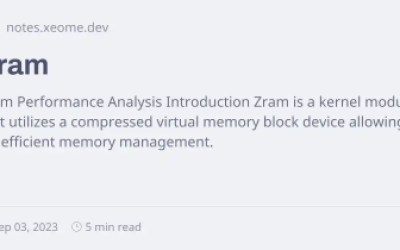After many (many) years of resisting temptation, followed by sowing seeds via succumbing to irresistible, gently-used-on-eBay prices for both generations of Schiit’s Mani phono preamp:

Vinyl enthusiasm
I’ve recently reconnected with the “vinyl” infatuation of my youth. Sorry, audiophiles, you’re still not going to convince me that records “sound better” than lossless (in reality, preferably perceptibly, minimally), large sample size, and high sample rate digital files, whether locally stored or Internet-streamed. In my contrarian opinion, in fact, the claimed “warmth” of the stylus (aka, “needle”)-delivered music is fundamentally a reflection of its measurably degraded SNR and other distortion measures versus more pristine digital alternatives, akin to guitar players clinging to archaic amp-and-speaker sets and recording engineers preferring ancient mics.
So why have I gone back “down the rabbit hole”, then? It’s because, access inconvenience (vs digital) aside, there’s something fundamentally tactile-titillating and otherwise sensory-pleasing (at least to a memory-filled “old timer” like me) to carefully pulling an LP out of its sleeve, running a fluid-augmented antistatic velvet brush over it, lowering the stylus onto the disc and then sitting back to audition the results while perusing the album cover’s contents. I’m not going to admit publicly how many (dozen) albums I’ve already accumulated while also striving to suppress ruminations on the dozens of albums I donated a few dozen years ago. I’ve also acquired several turntables, both belt- and direct-drive in design, which I’ll assuredly be showcasing in future write-ups.
An elementary turntable
The first, Audio-Technica’s AT-LP60XBT, is the star of this piece:

My wife actually bought the AT-LP60XBT for me a while ago, along with a rare, sealed copy of “Buckingham Nicks,” Lindsey Buckingham, and Stevie Nicks’ only album prior to joining Fleetwood Mac. I finally dug it out of storage and fired it up earlier this year. Audiophiles are both cringing and chuckling at this point because it’s admittedly an entry-level model, both in comparison to upscale options from Audio-Technica’s own product line (that latest transparent turntable is wild, eh?) and examples from other manufacturers—my Fluance RT85, for example:

That said, it’s fully automatic in operation, which is great when we just want to listen to music, not bothering with the added minutia of manually placing the stylus on the disc prior to playing it and then returning the headshell (along with its mated tonearm) to rest afterward. And, referencing the “BT” portion of the product name, the AT-LP60XBT’s inclusion of both wired (albeit not with user-selectable integrated preamp bypass support for an external preamp such as one of the Schiit units mentioned earlier, a feature which its AT-LP70XBT successor offers) and wireless over both SBC and higher quality albeit baseline aptX Bluetooth codecs (audiophiles out there are really cringing now) affords it expanded connectivity and location flexibility.
Cartridge construction
One key reason why the AT-LP60XBT is viewed as an “entry-level” turntable (aka, “record player”) is that it doesn’t support user upgrade of the (also entry-level) cartridge that originally came with it. Then again, that same inflexibility also means that AT-LP60XBT owners never need to bother with tracking force and antiskating control settings. The topics of cartridges and the styli they mate with, I quickly learned upon reconnecting with turntable technology, provide no shortage of opinions, debate, disagreement, and diatribes within the “vinyl” community.
Two main cartridge options exist: moving magnet and higher-end moving coil. They work similarly, at least in concept: in conjunction with the paired stylus, they transform physical info encoded onto a record via groove variations into electrical signals for eventual reproduction over headphones or a set of speakers. Differences between the two types reflect construction sequence variance of the cartridge’s two primary subsystems—the magnets and coils—and are reflected (additionally influenced by other factors such as cantilever constituent material and design) not only in perceived output quality but also in other cartridge characteristics such as output signal strength and ruggedness.
Stylus options
Once you’ve selected a particular cartridge technology, manufacturer, and model, you then need to pick the stylus (or styli…keep reading) for that cartridge. Again, two primary needle head (the tip of the stylus, which makes contact with the record groove) types—conical and elliptical—exist, a topic which I’ll discuss in more detail shortly, but other, higher-end (at a much higher cost) options are also available. And then there are both nude (solid diamond) and bonded (metal with a diamond tip) needle construction options…terminating in either a round or square stylus shank…it’s enough to cause a headache. I’d even read about turntable owners who keep at close reach multiple stylus (and even cartridge, for the true fanatics) options for on-the-fly interchange, depending on what disc is to be played next! Therefore, I guess, another advantage to the AT-LP60XBT: fewer options (and combinations of them) to fuss about. Hold that thought.
As previously mentioned, the cartridge in this case (a variant of the AT3600L) is permanently integrated with the headshell (which is also permanently integrated with the tonearm):

The included ATN3600LC stylus is conical, with characteristics Audio-Technical describes thusly:
A good all-rounder, literally. Its head is rounded with a radius of around 0.6 mil which touches the centre of the record groove walls, though 78 RPM records will need a much larger needle. Conical styli are often more budget friendly, producing a rich, solid sound.

Here’s, from Fluance, a conceptual picture of what the conical needle head looks like in-groove:

Styli eventually wear out and need to be replaced:

And for alternative upgrade (at the tradeoff of shorter usable life prior to needed replacement), Audio-Technica also offers an elliptical stylus, the ATN3600LE, for the AT3600L cartridge:

Here’s how Audio-Technica describes the underlying elliptical needle head technology:
The front part of the needle rides in the center of the record groove, while the smaller side makes more contact with the groove walls. This helps produce a more enveloping sound, as an Elliptical stylus tracks the vinyl grooves with greater precision.
Again, from Fluance, here’s an in-groove conceptual image for the elliptical needle head:

And here’s Fluance’s broader “take” on the differences between various cartridge and styli options:
That said, my research had also uncovered recommendations for two elliptical stylus alternatives to the ATN3600LE for the AT3600L; the comparably priced LP Gear CFN3600LE:

and lower cost (albeit, from my research, functionally equivalent) Pfanstiehl 4211-DE:

I, of course, went with the cheaper $29 option 
Stylus comparisons
Once I had both styli in my hands, I did audition comparisons between them on several pristine LPs typifying various music genres. Did I discern any differences? Not really, honestly. That said, my listening approach was admittedly casual, not critical. And again, the cartridge and broader turntable are entry-level. So, did that mean I’d wasted $29? Not at all, as it turned out.
The key word here is pristine. Most of the vinyl I’ve so-far acquired has been brand new, so that I don’t inherit the previous owner’s (or owners’) extended listening and potential poor handling wear-and-tear outcomes. But in a few cases, I’ve gone with used purchases for reasons such as:
- The album’s no longer in “pressing” production, so any (if at all) remaining new copies are outrageously expensive (example: Widespread Panic’s Light Fuse, Get Away), or
- On the other end of the spectrum, I might have come across a used copy whose vs-new low price I’d been unable to resist, so I’d decided to roll the dice and take a chance.
Take, for example, Rush’s Archives, a compilation of the band’s first three albums, Rush, Fly By Night, and Caress of Steel. The latter two standalone titles currently sell new for ~$30 each on Amazon; judging from scant and pricey ($138!) new inventory of Rush there, I suspect it’s no longer in production. I can’t find Archives new on Amazon; on eBay, it’s selling (again, new) for $249 and up. Conversely, on Mercari (no, I never learn) I’d found a cosmetically decent (judging from photos and descriptions) copy for $22.95 minus a 10% promo coupon (plus shipping and tax).
I went for it. When it arrived, alas, it suffered from no shortage (albeit also not a superfluous amount) of “clicks” and “pops”, in spite of my diligent cleaning attempts. Disc two, unfortunately, also had a notable skip right in the middle of the eponymous title track. The apologetic seller offered me a $10 partial refund, which helped. That said, there still was the matter of the Fly By Night flaw. But then I remembered something else mentioned in my earlier stylus research.
Because conical styli only ride partway down in the record groove, they supposedly don’t capture all the available fidelity potential with pristine records. But that same characteristic turns out to be a good thing with non-pristine records, for which all manner of gunk has accumulated over time in the bottom of the groove. By riding above the dross, the conical needle head doesn’t suffer from its deleterious effects.
I glanced at the cartridge: yep, I had the elliptical stylus installed. I swapped it out for the conical counterpart: notably fewer “clicks” and “pops”. And apparently that same “lack of precision” also makes a conical stylus more immune to even more egregious groove flaws, because the skip was now completely gone, too. Prior sarcasm thus humbled by subsequent experience to the contrary, I now “keep at close reach both stylus options for on-the-fly interchange depending on what disc is to be played next.” With no shortage of associated chagrin. Ahem.
Lessons learned
Why’d I tell this tale? Because, at least to me, it’s not just about turntable styli. As I thought back on the experience afterward, I realized that it more broadly exemplifies a situation that many of you (and certainly I) have likely experienced during past product development cycles. You make a design tweak, maybe just to save a few cents on the bill-of-materials cost. It delivers the desired outcome…or maybe it doesn’t. But inevitably, it also results in other (often ahead of time unforeseen) transformations to the product you’re working on, sometimes for the better, sometimes for the worse, and sometimes just making it different.
What situations like mine have you encountered in the past, and how have they informed your subsequent product development (and broader tactics-for-life) approaches? Let me and your fellow readers know in the comments!
—Brian Dipert is the Editor-in-Chief of the Edge AI and Vision Alliance, and a Senior Analyst at BDTI and Editor-in-Chief of InsideDSP, the company’s online newsletter.
Related Content
- Mega-cool USB-based turntable
- Vinyl vs. CD: Readers respond
- Audio myth: Vinyl better than CD?
- Vinyl vs. CD: More reader feedback
- Vinyl vs. CD myths refuse to die
The post Hardware alterations: Unintended, apparent advantageous adaptations appeared first on EDN.









